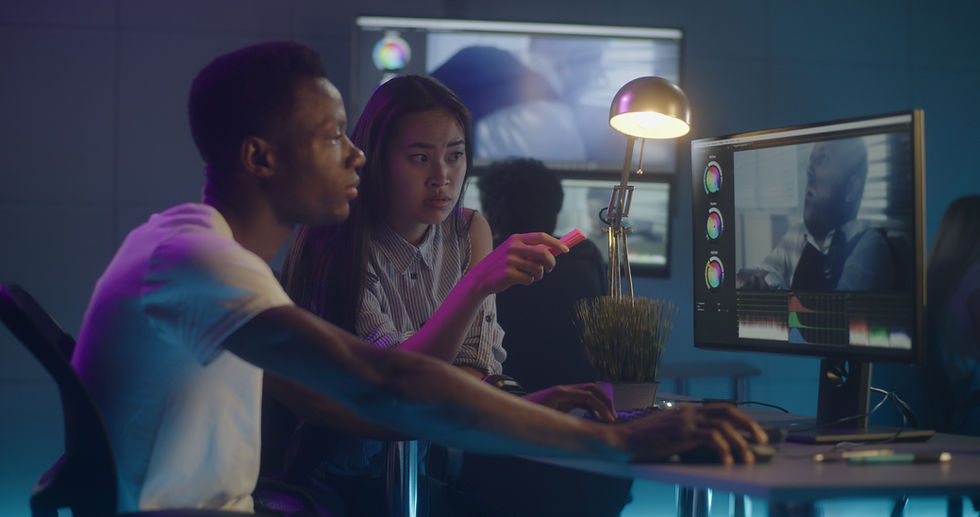The Importance of Accessibility in Videos: Subtitles and Audio Description
- Norberto Silvestre

- Mar 11
- 3 min read
Updated: Mar 13
This article explores the importance of accessibility in videos, highlighting subtitles and audio description as essential tools for inclusion. It also discusses their benefits, including legal compliance, audience expansion, SEO improvements, and enhanced user experience.

Introduçâo
Audiovisual accessibility refers to practices that make content like videos, films, and TV programs accessible to people with sensory disabilities, particularly those who are deaf or visually impaired. The goal is to ensure that everyone can fully access and understand the content, promoting social and cultural inclusion. This practice not only benefits individuals with disabilities but also enhances the overall experience for all users.
The audiovisual industry is constantly evolving, driven by technological advancements such as CGI and special effects that transform visual storytelling. However, accessibility remains an essential aspect to ensure that everyone can fully enjoy the content.
The Importance of Subtitles
Subtitles are text displayed on the screen that transcribes dialogues, identifies speakers, and describes relevant sounds such as music or sound effects. They are crucial for individuals with hearing impairments, allowing them to fully engage with the content. Additionally, subtitles are useful in noisy or silent environments where audio cannot be played.
Subtitles also contribute to SEO improvement, as text can be indexed by search engines, increasing online content visibility. If you want to understand more about the relationship between videos and SEO, we recommend reading about the importance of videos in a website's SEO.
The Relevance of Audio Description
Audio description is a technique that translates images into words, enabling blind or visually impaired individuals to understand scenes in films, photographs, theater plays, and other visual media. This feature provides detailed descriptions of visual elements such as actions, facial expressions, and settings, inserted during pauses in the original audio.
Audio description is essential for ensuring equal access to information and entertainment. Beyond inclusion, its adoption can be part of a broader corporate education video strategy, ensuring that all employees have access to the same training materials.
Benefits of Accessibility in Videos
Social Inclusion
The adoption of resources like subtitles and audio description ensures that individuals with sensory disabilities have equal access to audiovisual content, promoting their active participation in society.
Legal Compliance
In Brazil, the Brazilian Inclusion Law (LBI) requires digital content to be accessible, including videos. Failure to comply with these regulations can result in legal penalties.
Audience Expansion
By making videos accessible, companies expand their reach, catering to a wider and more diverse audience. This strategy can be combined with market segmentation in Google Analytics to target specific audiences more effectively.
Enhanced User Experience
Accessibility features improve the overall user experience, making content more understandable and enjoyable for everyone.
SEO Benefits
Subtitles and transcripts can be indexed by search engines, improving content discoverability and increasing brand visibility.
Implementing Accessibility in Videos
Adding Subtitles
To ensure accessibility, it is essential to include accurate subtitles synchronized with the audio. They should transcribe dialogues, identify speakers, and describe relevant sounds.
Implementing Audio Description
Audio description should be incorporated to describe important visual elements such as actions, facial expressions, and settings, inserting these descriptions during silent gaps in the original audio.
Using Sign Language Interpreters
Including windows with sign language interpreters in videos is crucial to making content accessible for deaf individuals who use sign language as their primary means of communication.
Conclusion
Video accessibility is essential for promoting inclusion and ensuring that everyone can enjoy audiovisual content. Beyond legal compliance, these practices expand audience reach, enhance user experience, and strengthen the reputation of organizations committed to social responsibility.
If you need help from audiovisual and marketing experts, contact Bendita Filmes.







Comments